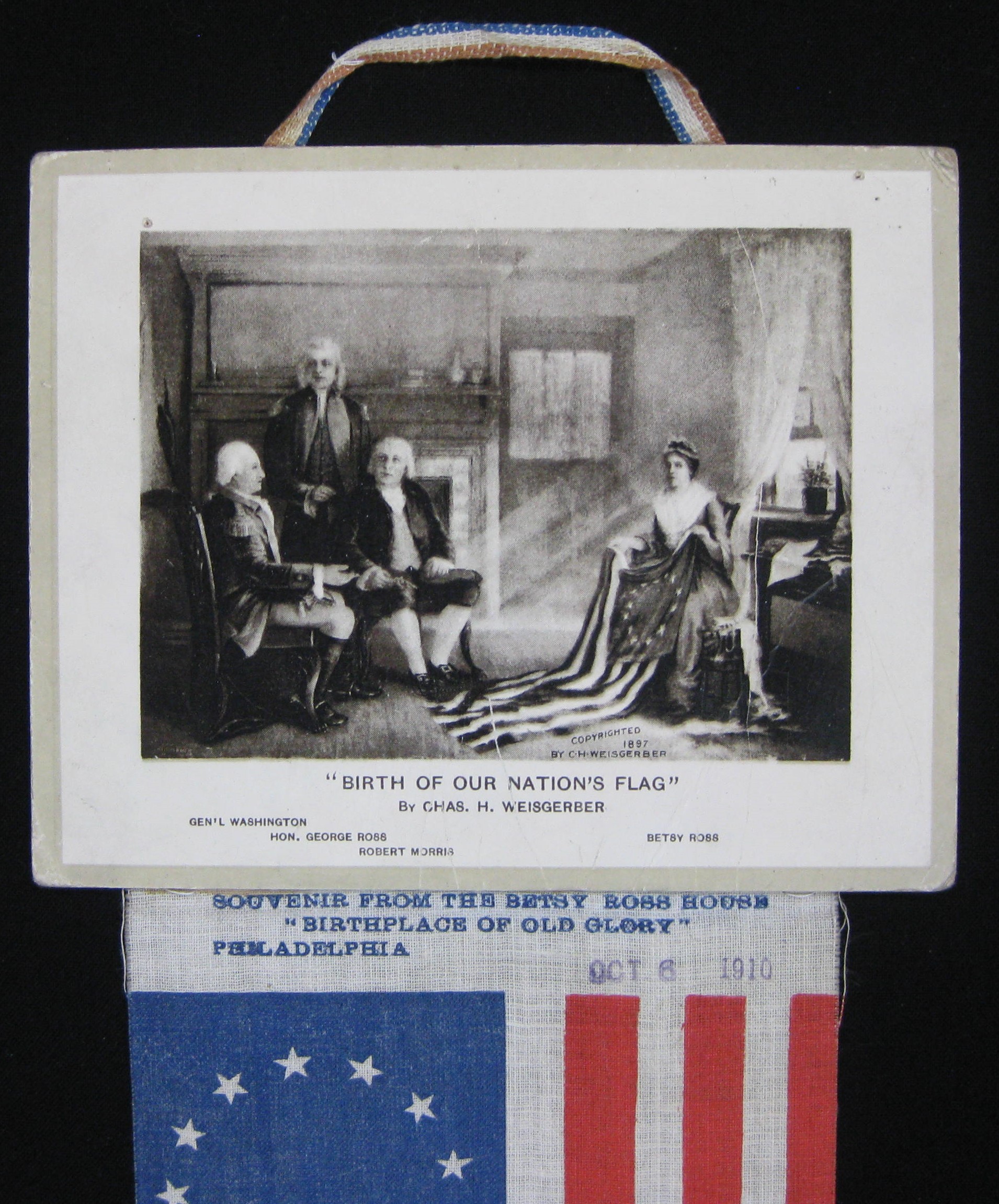13 Star Antique Flag with Betsy Ross Star Pattern | Circa 1910
13 Star Antique Flag with Betsy Ross Star Pattern | Circa 1910
Frame Size (H x L): 17.5” x 10.5”
Flag Size (H x L): 11” x 5” (Including the Card)
Offered is a thirteen star Betsy Ross flag, dated October 6th, 1910. This example was a souvenir from the Betsy Ross House, and it is still attached to its original advertising card. Antique flags in the Betsy Ross pattern—thirteen stars in a single wreath—are among the most famous, but most rare, of all antique thirteen-star flags. While many of us were taught that Betsy Ross designed and made the first flag, and that it had thirteen stars in such a pattern, it is a myth. It took hold, in 1870, when William Canby, the grandson of Ross, told the Historical Society of Pennsylvania that Ross designed and made the flag at George Washington’s request. His only evidence was in the form of self-serving family affidavits. The myth was further propagated by Rachel Albright and Sarah Wilson—Ross’s granddaughter and great-granddaughter, respectively—when they began making and selling “Betsy Ross” flags in Independence Hall in Philadelphia.
It is clear that Betsy Ross made flags in in Philadelphia in the 1770’s, but there is no evidence that she made the first flag in the form of letters, articles, journals, or records. Historians generally do not accept that Ross designed or made the first flag, and instead accept that Francis Hopkinson was the first to design it. Hopkinson was a member of the Continental Congress, a signer of the Declaration of Independence, and a lawyer. The evidence supporting Hopkinson’s role includes his claim to Congress for payment for having furnished the design of “the flag of the United States of America.” Hopkinson asked to be paid in “a Quarter Cask of public wine” and later asked to be paid in $1,440 in Continental paper. Both payments were refused by Congress. Congress agreed that Hopkinson had a role in the design, but refused to pay him because he “consulted” other men.
Antique Betsy Ross pattern flags are very difficult to find, even after the myth that was perpetuated by Canby, Albright, and Wilson. In our experience, of the 13 star antique flags that come to market, around 75% are the 3-2-3-2-3 pattern, around 20% are the medallion pattern, and the remaining 5% are various different patterns, only some of which are the Betsy Ross pattern.
The original use of the thirteen-star flag dates to June 14th, 1777, the time at which the Continental Congress adopted a resolution creating the first official flag. The resolution stated, “Resolved, that the flag of the United States be made of thirteen stripes, alternate red and white, that the union be thirteen stars, white on a blue field, representing a new constellation.” Thirteen-star flags were official from 1777-1795, but have been in use ever since.
Small US Navy boats used it as the ensign from 1795 until 1916. Thirteen-star flags were also flown at the time of George Washington’s death in 1799 and to celebrate the nation’s 50th anniversary in 1824. They were also flown in 1824 in honor of General Lafayette’s return to the US for his nationwide tour. Celebrations for his Revolutionary War service were held in New York, Boston, and Philadelphia, along with many locations in the southern and western states.
Further, thirteen-star flags were also common during the Mexican War in 1846-1848 and the Civil War in 1861-1865. They were both relatively close in time to the revolution, and were very patriotic times, particularly during the Civil War time period when flag use became much more common than had ever previously been the case. Thirteen-star flags were also flown during the centennial celebrations, which were held across the country and, most notably, in Philadelphia at the Centennial International Exhibition.
Conservation Process: This flag was hand sewn to cotton fabric, and both were hand sewn to a mounting board. To prevent the black dye in the cotton fabric from seeping into the flag, it was first washed in a standard wash and then in a dye setting wash. The flag is positioned behind Optium Museum Acrylic.
Frame: The offering is in an antique wooden frame.
Condition Report: There is some very, very minor staining on the advertising card and flag, but both are in excellent condition.
Collectability Level: The Good – Perfect for Beginning Collectors and Gifts
Date of Origin: 1910
Number of Stars: 13
Associated State: Original 13 Colonies




